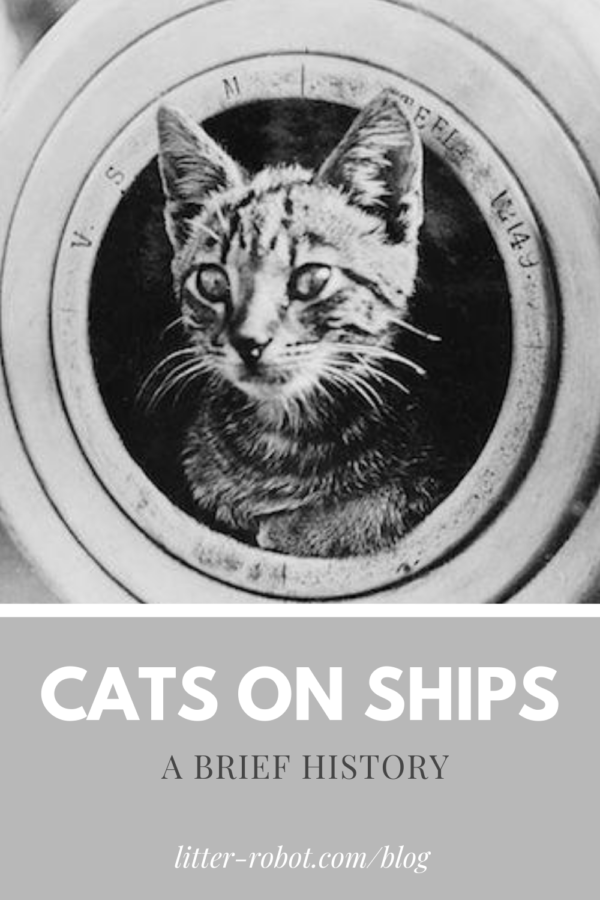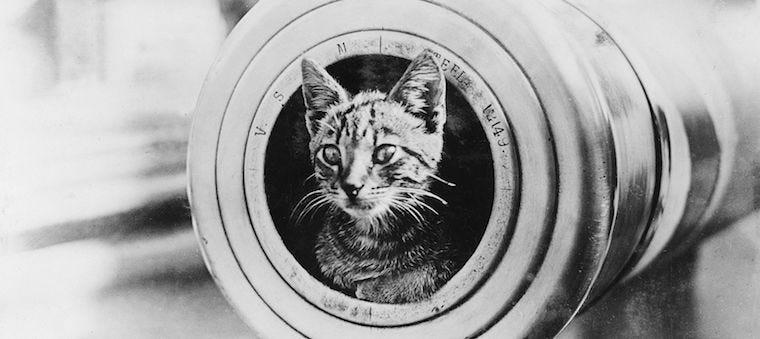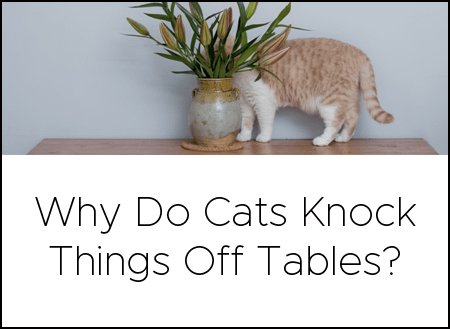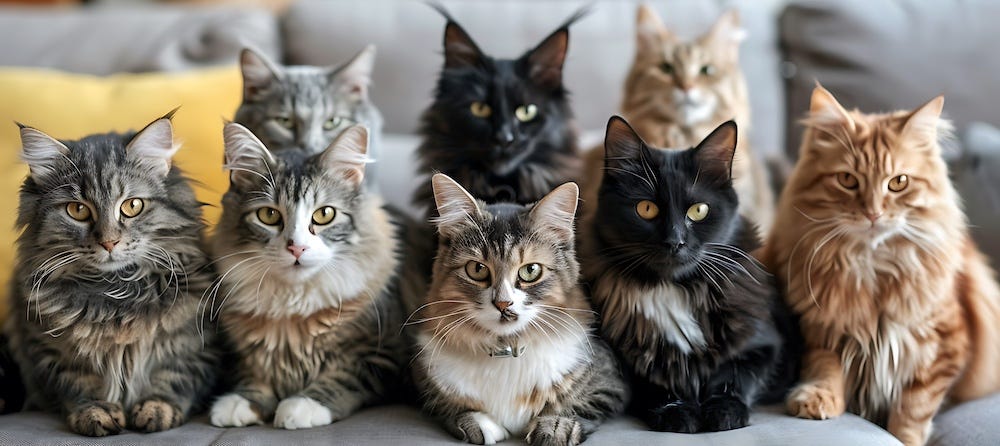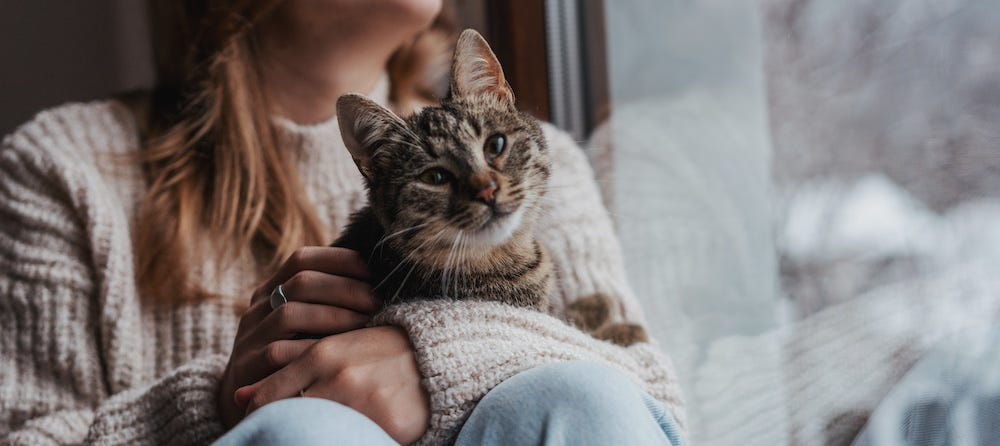Yo ho ho, it’s International Talk Like a Pirate Day! In honor of this strange holiday, we found ourselves investigating cats on ships. (Aye, pirate ships included!) Let’s take a look at the long history and intriguing superstitions behind cats on ships, as well as seven renowned seafaring felines.
Mousers on land and sea
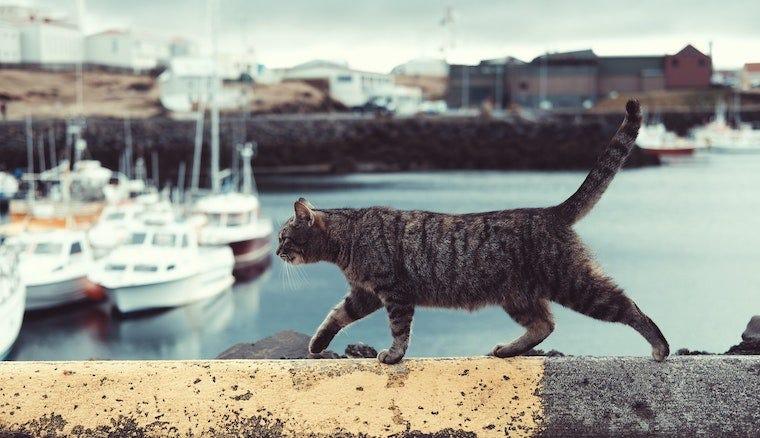
Cats are nature’s best rodent control. These apex predators evolved from defending food stores on farms from pests to ridding ships of vermin that might otherwise threaten the crew’s food supply, ropes, woodwork, grain cargo, and sailors’ very health—as rats were known to spread a plethora of diseases, including the black plague.
For instance, the American Shorthair is known as America’s first cat because their descendants came over with the colonists on the Mayflower four centuries ago. These cats were said to be “working cats” that kept rats from infiltrating the ship’s food sources.
Likewise, Norweigan Forest Cats are thought to have traveled with the Vikings, keeping their ships and villages free of vermin.
Ship’s cat: Polydactyls
Polydactyl cats have extra toes caused by a genetically inherited trait called polydactylism. These cats were considered good luck aboard ships. Because of their extra toes, they were top-notch mousers, climbing higher and faster than regular felines. In fact, many sailors believed they were also able to maintain better balance upon the high seas.
Fun fact: A sea captain gifted author Ernest Hemingway a polydactyl cat in the 1930s. Hemingway collected polydactyls at his home in Key West, the ancestors of which roam the Hemingway Home estate in Key West even today.
Superstitions

So, polydactyl cats were considered good luck. What are some other superstitions about cats on ships?
Black cats, which were usually (and unfairly) considered bad luck as far as old cat superstitions go, were actually thought to protect fisherman at sea. Sometimes fishermen’s wives kept black cats at home, too, in the hopes of further protection. Calico cats were said to protect Japanese fishermen from harsh storms and ghosts.
Some other odd superstitions surrounding cats on ships include:
- If a cat approached a sailor on deck, it was lucky; but if a cat only came halfway and then retreated, it was unlucky.
- Cats could start storms through magic stored in their tails.
- If a ship's cat fell or was thrown overboard, a terrible storm to sink the ship would be summoned; and if the ship was able to survive, it would be cursed with nine years of bad luck.
- If a cat licked its fur against the grain, it meant a hail storm was coming; if it sneezed it meant rain; and if it was frisky it meant wind.
7 famous cats on ships

Although we didn’t find historical proof of cats on pirate ships, there are plenty of records of a ship’s cat from the past several centuries. Take a look at these seven brave kitties of the sea!
Oscar, aka Unsinkable Sam
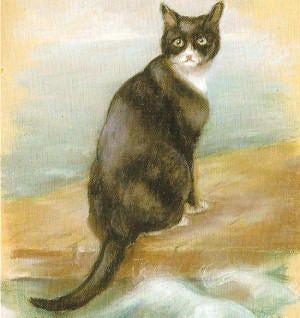
Oscar, aka “Unsinkable Sam,” survived three major WWII shipwrecks between May and November 1941. After the third shipwreck, he lived out the rest of his days in more peaceful conditions in the UK. A portrait of him exists in the private collection of the National Maritime Museum in London.
Pooli
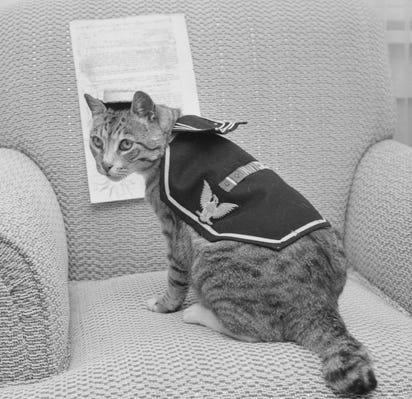
The cat Pooli served aboard an attack transport during World War II. This faithful ship’s cat was awarded three service ribbons and four battle stars for her service!
Peebles
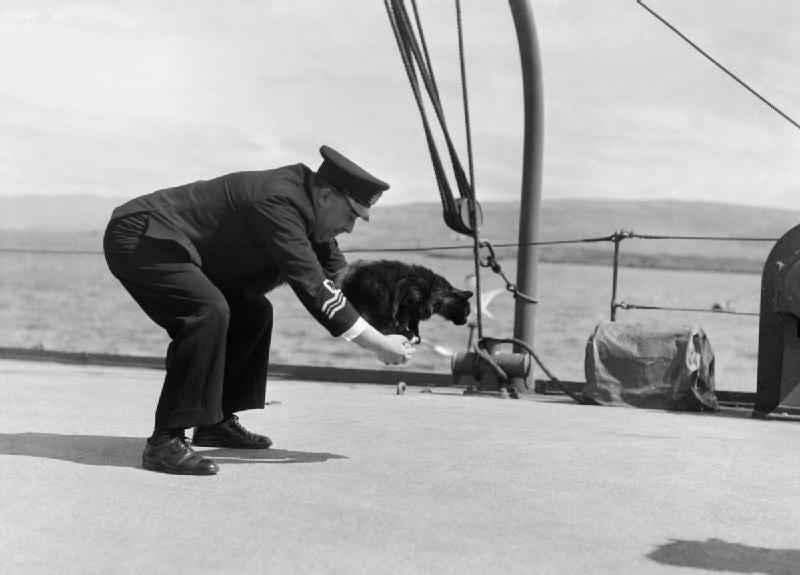
Peebles, the ship's cat aboard HMS Western Isles in WWII, was known to be particularly intelligent and enjoyed among the ship’s crew. (He would even shake the hands of strangers!)
Tiddles
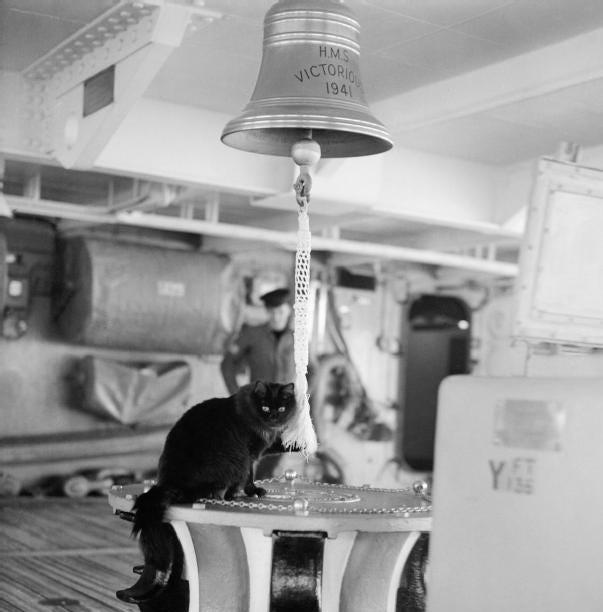
Tiddles was the ship’s cat on numerous Royal Navy aircraft carriers. He was often found on the aft capstan, playing with the bell rope. He traveled over 30,000 miles during his time in service.
Blackie, aka Churchill
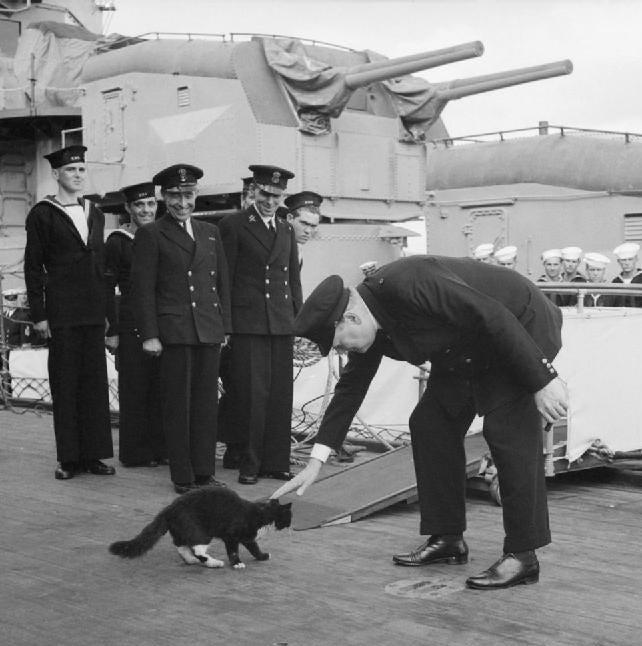
Blackie was the ship’s cat on HMS Prince of Wales, which in 1941 carried Prime Minister Winston Churchill to secretly meet U.S. President Roosevelt to declare the Atlantic Charter. Churchill and Blackie’s meeting was famously photographed, and the cat was later renamed Churchill in honor of the visit.
Trim
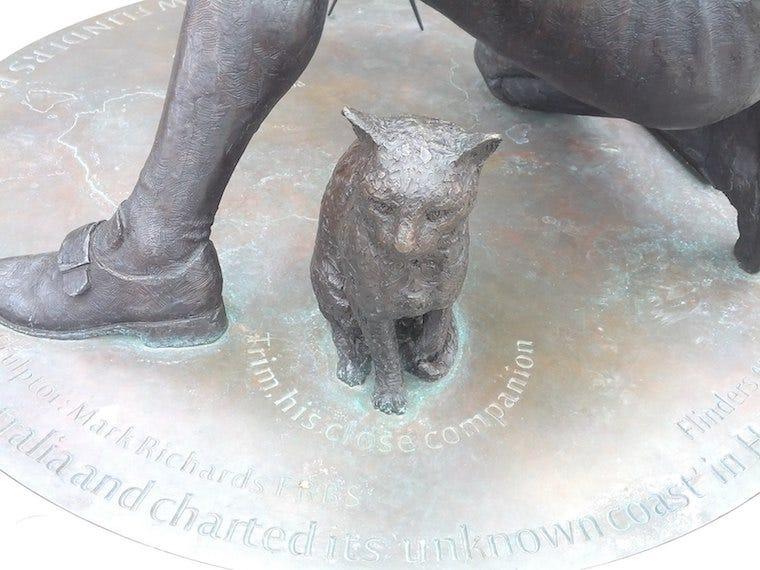
Trim was the ship's cat on a number of the ships under the command of Matthew Flinders, who led the second circumnavigation of Australia and identified it as a continent. Flinders was so taken with the cat that he frequently wrote about him after the cat’s death; statues and plaques in Trim’s honor can be found throughout Australia.
Simon

Simon was the ship’s cat on the Royal Navy sloop-of-war HMS Amethyst. He was appointed to the rank of “Able Seacat” Simon, and was posthumously awarded the Dickin Medal, the only cat ever to earn the award. Simon was buried with full naval honors.
We hope you’ve enjoyed learning about cats on ships on International Talk Like a Pirate Day!
Cover photo: The feline mascot of the Australian light cruiser HMAS Encounter, peering from the muzzle of a 6 inch gun. Circa. 1914-1918
